Claire Barrand's Blog, page 4
November 17, 2017
The Fairy Minister of Wales (Edmund Jones)
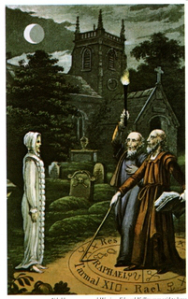 "The Old Prophet Jones"Welsh Folklore would not be quite the same if it were not for the existence of a man by the name of Rev. Edmund Jones. Much of Welsh customs and folklore that originated before the Industrial Revolution of Wales was thanks to this remarkable man. Edmund was known as “Yr Hen Broffwyd” which translates as “The Old Prophet” because he had an interest in astrology and displayed an uncanny ability to predict the future. Edmund was famed for his stalwart belief in fairies and the supernatural, and he controversially taught his congregation that to believe in the Supernatural realm was part of the Christian faith. Born in 1702 on a small farm of Penllwyn, in the parish of Nantyglo. Edmund was educated by the curate of Aberystwyth, Rev. Howel Prosser the man famed for taking part in a “fairy funeral.”
"The Old Prophet Jones"Welsh Folklore would not be quite the same if it were not for the existence of a man by the name of Rev. Edmund Jones. Much of Welsh customs and folklore that originated before the Industrial Revolution of Wales was thanks to this remarkable man. Edmund was known as “Yr Hen Broffwyd” which translates as “The Old Prophet” because he had an interest in astrology and displayed an uncanny ability to predict the future. Edmund was famed for his stalwart belief in fairies and the supernatural, and he controversially taught his congregation that to believe in the Supernatural realm was part of the Christian faith. Born in 1702 on a small farm of Penllwyn, in the parish of Nantyglo. Edmund was educated by the curate of Aberystwyth, Rev. Howel Prosser the man famed for taking part in a “fairy funeral.”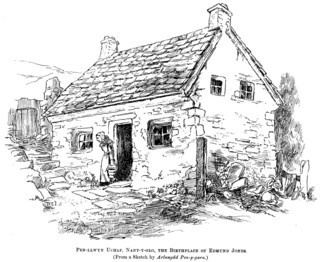 In 1740 Edmund moved to Pontypool and built a Methodist chapel named Ebenezer Chapel, where he served his congregation until the age of 91. He published several works during his lifetime notably three focused on the supernatural material. One was called “A relation of apparitions of spirits in the principality of Wales (1780)” which was a collection of accounts of strange sightings that he believed took place within the county of Monmouthshire. The second book was “A Geographical, Historical and Religious account of the Parish of Aberstruth” and then the most celebrated of his works which were “A relation of Apparitions of Spirits in the Principality of Wales” (1780). These works have been lost or edited over the centuries. However, there are some transcripts in the National Library of Wales. It goes without saying that Edmund Jones works were incredibly rare and valuable part of the history of Welsh Folklore.In Wirt Sikes 1880. British Goblins: The Realm of Faerie it says;“He was noted in his district for foretelling things. He would, for instance, be asked to preach at some anniversary or quarterly meeting, and he would answer, ‘I cannot, on that day; the rain will descend in torrents, and there will be no congregation.’ He would give the last mite he possessed to the needy, and tell his wife, ‘God will send a messenger with food and raiment at nine o'clock to-morrow.’ And so it would be.”[Sikes 1880, p. 105]Edmund Jones was a remarkable man, when aged 80 years old he traveled 400 miles on foot to North Wales to preach twice a day every day and he had a donkey called “Shoned.” That he rode in the local area around Pontypool.Jones was, however, a somewhat controversial figure as you might imagine, and rather unpopular. His strong beliefs in the realm of the Faerie were driven by the fact he was terrified of superstitions and bad omens. He was incredibly scornful of anyone that questioned the existence of the fae and accused them of being "Sadducees" and "infidels".Jones alluded to the existence of fairy rings and suggested that the bible references them in verse Matt. Xii. 43 “The fairies dance in circles in dry places and the scripture saith that the walk of evil spirits is in dry places” he observed. He taught that the fae favoured the oak tree and the female oak especially. He told his parishioners to prepare for the visits of the ‘little people’ by removing any knives or sharp instruments so that the fairies would not be offended. Most of his accounts were those of other witnesses and not his own. However, on two occasions he did tell of his personal experiences with faerie folk.One time, he recalled a time when as a very young boy walking with his aunt, just after sunrise in a field in Cae’r Cefn. He claimed he witnessed a Sheepfold full of Fae folk that were attending some sort of ceremony. A fair female dressed in a high crown hat and a red jacket was being honored by male Fae dressed in white cravats.
In 1740 Edmund moved to Pontypool and built a Methodist chapel named Ebenezer Chapel, where he served his congregation until the age of 91. He published several works during his lifetime notably three focused on the supernatural material. One was called “A relation of apparitions of spirits in the principality of Wales (1780)” which was a collection of accounts of strange sightings that he believed took place within the county of Monmouthshire. The second book was “A Geographical, Historical and Religious account of the Parish of Aberstruth” and then the most celebrated of his works which were “A relation of Apparitions of Spirits in the Principality of Wales” (1780). These works have been lost or edited over the centuries. However, there are some transcripts in the National Library of Wales. It goes without saying that Edmund Jones works were incredibly rare and valuable part of the history of Welsh Folklore.In Wirt Sikes 1880. British Goblins: The Realm of Faerie it says;“He was noted in his district for foretelling things. He would, for instance, be asked to preach at some anniversary or quarterly meeting, and he would answer, ‘I cannot, on that day; the rain will descend in torrents, and there will be no congregation.’ He would give the last mite he possessed to the needy, and tell his wife, ‘God will send a messenger with food and raiment at nine o'clock to-morrow.’ And so it would be.”[Sikes 1880, p. 105]Edmund Jones was a remarkable man, when aged 80 years old he traveled 400 miles on foot to North Wales to preach twice a day every day and he had a donkey called “Shoned.” That he rode in the local area around Pontypool.Jones was, however, a somewhat controversial figure as you might imagine, and rather unpopular. His strong beliefs in the realm of the Faerie were driven by the fact he was terrified of superstitions and bad omens. He was incredibly scornful of anyone that questioned the existence of the fae and accused them of being "Sadducees" and "infidels".Jones alluded to the existence of fairy rings and suggested that the bible references them in verse Matt. Xii. 43 “The fairies dance in circles in dry places and the scripture saith that the walk of evil spirits is in dry places” he observed. He taught that the fae favoured the oak tree and the female oak especially. He told his parishioners to prepare for the visits of the ‘little people’ by removing any knives or sharp instruments so that the fairies would not be offended. Most of his accounts were those of other witnesses and not his own. However, on two occasions he did tell of his personal experiences with faerie folk.One time, he recalled a time when as a very young boy walking with his aunt, just after sunrise in a field in Cae’r Cefn. He claimed he witnessed a Sheepfold full of Fae folk that were attending some sort of ceremony. A fair female dressed in a high crown hat and a red jacket was being honored by male Fae dressed in white cravats. In another written account he told of being led astray by the Old Woman of the Mountain Llanhiddel Bryn, near Pontypool. He says as he was wandering lost he came to a strange house which he had never seen there before. He called and offered to say some prayers with the occupants of the house introducing himself as the minister. Such was the praise of the house residents, of a 23-year-old man with such knowledge such as his, that he told his followers, “the old hag got nothing by leading me astray that time.”Some of the stories of ghosts in Jones works describe incredible ghostly and creepy apparitions, and they make for an incredible read. Some that were giant figures, misshapen things “without regular members” and other entities that witnesses described that rolled like a ball or whirled like Catherine wheels, creatures with long tongues and spirits that shapeshifted into hounds or pigs or walls of fire. All accounts were documented in detail with the names and locations of the witnesses and every aspect of their encounter written down. It is safe to say that had it not been for Edmund Jones written works much of the folklore that has survived today in Wales would be lost forever. His books, however controversial at the time has given historians and scholars a treasured insight into the past, and for paranormal and folklore researchers, these accounts make a fascinating study.Edmund Jones is buried in the churchyard of his beloved Ebenezer Chapel in Pontypool.
In another written account he told of being led astray by the Old Woman of the Mountain Llanhiddel Bryn, near Pontypool. He says as he was wandering lost he came to a strange house which he had never seen there before. He called and offered to say some prayers with the occupants of the house introducing himself as the minister. Such was the praise of the house residents, of a 23-year-old man with such knowledge such as his, that he told his followers, “the old hag got nothing by leading me astray that time.”Some of the stories of ghosts in Jones works describe incredible ghostly and creepy apparitions, and they make for an incredible read. Some that were giant figures, misshapen things “without regular members” and other entities that witnesses described that rolled like a ball or whirled like Catherine wheels, creatures with long tongues and spirits that shapeshifted into hounds or pigs or walls of fire. All accounts were documented in detail with the names and locations of the witnesses and every aspect of their encounter written down. It is safe to say that had it not been for Edmund Jones written works much of the folklore that has survived today in Wales would be lost forever. His books, however controversial at the time has given historians and scholars a treasured insight into the past, and for paranormal and folklore researchers, these accounts make a fascinating study.Edmund Jones is buried in the churchyard of his beloved Ebenezer Chapel in Pontypool. 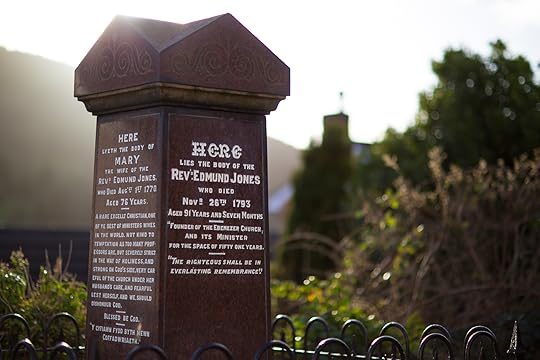
Published on November 17, 2017 06:41
November 13, 2017
"IWRWG FELIN DDU", THE STORY OF A HAUNTED HOUSE
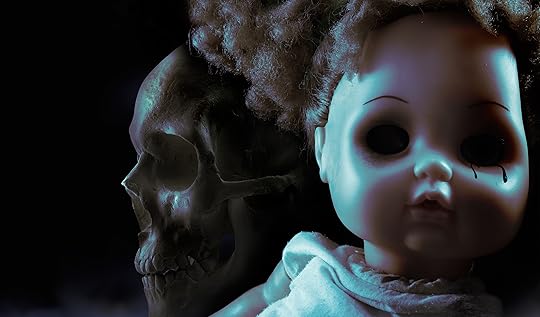 Let me share with you a beautifully written account titled IWRWG FELIN DDU. THE STORY OF A HAUNTED HOUSE.(BY JOHN HUMPHREYS, BANGOR), a tragic Christmas ghost story, sad and heartbreaking but also chilling and thought-provoking.The story featured in the North Wales Chronicle on Christmas Eve 1892. I have found that the estate where Iwrwg Felin Ddu is still in existence and has a holiday cottage for hire on the grounds, however, the property in the story is the former gatehouse, of which I do not know if it still exists or not."Iwrwg Felin Ddu still stands, gloomy, isolated, and uninhabited, within ten miles of the Cathedral City of Bangor; damp, dark, dilapidated. Even in brightest sunshine and daylight the old house exudes, so to speak, a depressing, horrific atmosphere, as it within its walls had sometime been enacted one of those terrible tragedies which appall and outrage all human faculties and sentiments. And such in truth is the case, though no guilt or sin attaches to the mournful story. The mansion of the family on whose estate Iwrwg Felin Ddu stands is, within a mile, in the same home park, and one at least of the male members of that family has heard the ghastly and inexplicable laughter that every Christmas Eve resounds through the old building in horrible peals. The story is not only well-known to the members of the family by hearsay, but is actually, in its main features, written oat in imperishable ink on enduring parchment, which forms part of the family archives. Beyond what I have already said I may give no clearer indication of the locality of the building in connection with which the story I am about to relate in fuller detail is recorded. Iwrwg Felin Ddu was the gatehouse of what for the purpose of the present story may be designated the Elizabethan mansion of Plas lwrwg, the residence of the old Welsh family of Catlyon,and was tenanted -at the period (not very long ago) when the incidents of this story occurred by a sailor named Dafydd Jones.Nancy Jones, Dafydd's wife, had since the birth of her daughter Nance, been a weakly ailing woman. Who, nevertheless, was brimful of the bright, cheerful, loving, and self- sacrificing spirit which, before her marriage, had won the affection and love, not only of her husband but of all with whom she came in contact. And to the utmost of her reduced strength worked and slaved to keep her little home clean and bright and cosy for her sailor boy, as she called Dafydd when he came home from sea.Her ailment would frequently leave her frustrated when alone in the house far from aid or companionship, but never the less should be any chance passer or friend call. Nancy would struggle bravely to hide her pain and sickness, and minister with cheerfulness to the wants of her visitor. But her brave spirit was sorely tried in the long winter days and nights when Dafydd was far away, and she sat alone by the fire, or bustle through the house with enforced cheerfulness, singing to little Nance with a heavy heart.Oh, the gentle, brave, and holy soul that had no wish or desire save to please and help and befriend all in need, and to make her husband happy. Nan, as the endearing diminutive for Nance ran, was a healthy vigorous little girl, born on Christmas Eve, and just two years old on the day on which our story opens, and closes. Closes in gloom, in sadness, and in terrible agony. Little Nan, dear little Nan. Was there ever such a sweet little morsel of humanity as Nan? Little Nan was two years old and could say mama, dada, and me-me quite plainly. She called Dafydd “dada,” and his wife “mama” “me-me!”, of course, meant herself, and indicated all kinds of moods imperative, persuasive, supplicative, and denominative.
Let me share with you a beautifully written account titled IWRWG FELIN DDU. THE STORY OF A HAUNTED HOUSE.(BY JOHN HUMPHREYS, BANGOR), a tragic Christmas ghost story, sad and heartbreaking but also chilling and thought-provoking.The story featured in the North Wales Chronicle on Christmas Eve 1892. I have found that the estate where Iwrwg Felin Ddu is still in existence and has a holiday cottage for hire on the grounds, however, the property in the story is the former gatehouse, of which I do not know if it still exists or not."Iwrwg Felin Ddu still stands, gloomy, isolated, and uninhabited, within ten miles of the Cathedral City of Bangor; damp, dark, dilapidated. Even in brightest sunshine and daylight the old house exudes, so to speak, a depressing, horrific atmosphere, as it within its walls had sometime been enacted one of those terrible tragedies which appall and outrage all human faculties and sentiments. And such in truth is the case, though no guilt or sin attaches to the mournful story. The mansion of the family on whose estate Iwrwg Felin Ddu stands is, within a mile, in the same home park, and one at least of the male members of that family has heard the ghastly and inexplicable laughter that every Christmas Eve resounds through the old building in horrible peals. The story is not only well-known to the members of the family by hearsay, but is actually, in its main features, written oat in imperishable ink on enduring parchment, which forms part of the family archives. Beyond what I have already said I may give no clearer indication of the locality of the building in connection with which the story I am about to relate in fuller detail is recorded. Iwrwg Felin Ddu was the gatehouse of what for the purpose of the present story may be designated the Elizabethan mansion of Plas lwrwg, the residence of the old Welsh family of Catlyon,and was tenanted -at the period (not very long ago) when the incidents of this story occurred by a sailor named Dafydd Jones.Nancy Jones, Dafydd's wife, had since the birth of her daughter Nance, been a weakly ailing woman. Who, nevertheless, was brimful of the bright, cheerful, loving, and self- sacrificing spirit which, before her marriage, had won the affection and love, not only of her husband but of all with whom she came in contact. And to the utmost of her reduced strength worked and slaved to keep her little home clean and bright and cosy for her sailor boy, as she called Dafydd when he came home from sea.Her ailment would frequently leave her frustrated when alone in the house far from aid or companionship, but never the less should be any chance passer or friend call. Nancy would struggle bravely to hide her pain and sickness, and minister with cheerfulness to the wants of her visitor. But her brave spirit was sorely tried in the long winter days and nights when Dafydd was far away, and she sat alone by the fire, or bustle through the house with enforced cheerfulness, singing to little Nance with a heavy heart.Oh, the gentle, brave, and holy soul that had no wish or desire save to please and help and befriend all in need, and to make her husband happy. Nan, as the endearing diminutive for Nance ran, was a healthy vigorous little girl, born on Christmas Eve, and just two years old on the day on which our story opens, and closes. Closes in gloom, in sadness, and in terrible agony. Little Nan, dear little Nan. Was there ever such a sweet little morsel of humanity as Nan? Little Nan was two years old and could say mama, dada, and me-me quite plainly. She called Dafydd “dada,” and his wife “mama” “me-me!”, of course, meant herself, and indicated all kinds of moods imperative, persuasive, supplicative, and denominative.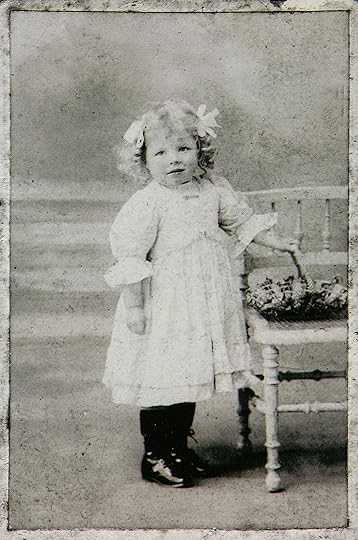 Light hair, blue eyes, rosy cheeks, and fat chubby little legs, and the most minute hands and fingers imaginable delicate, rosy fingernails, a perpetual mystery to Nan herself, and a charming delight to her father and mother. They taught her to clasp her hands together while they repeated a verse of “Gentle Jesus, meek and mild," and she would remain so till the verse was finished, and then she would laugh brightly, while they exclaimed approvingly, “Good girl!" Little Nan would walk, in a toddling fashion, round the kitchen. She would just reach the edge of the table, and she grabbed at everything placed thereon, pulling cups, saucers, milk jugs, etc., down with hideous clatter and ruin on to the floor, and then saying, reprovingly “AH!" If Nan saw a dog or a cat in the garden through the window, she would shake her little hand solemnly and scold the animal, and if it went away, she considered she had rendered a service to humanity at large and went about her little businesses with great satisfaction.Nan imitated everything her mother did in the way of cleaning. She saw some tobacco ash from her father's pipe on the fire stool one day and straightway toddled to a cupboard, got the blacklead brush, and brushed it off, at the same time exercising, denunciating, “AH!” Nan would put her arms far around your neck as she could, and kiss you lovingly, and say ma-ma, or da-da, according to your sex. She was the life of the house and its sunshine. From morning to night, she was flitting about, laughing. Crying. Falling, sobbing, climbing the chairs, pulling crockery off the table, exploring all on boards, hugely mystified by the great solemnly-ticking eight-day clock in the corner, at which she occasionally shook a monitory finger. and said, “Hush!”She had cut most of her teeth and got well through that trouble. She had had a touch of the croup, and her coughing tore her father and mother's hearts as she struggled with the phlegm which caused a death rattle in her little chest, and now and again threatened, to their horror, to choke her. But she always smiled cheerily in their faces the moment the spasm was over and cried “ma-ma, da-da.”Nan was inquisitive. She would prove all things for herself and be eternally bent on satisfying herself of the truth of her parents' exclamations hot, hot when she approached the fire, by touching the bars with her mite of a forefinger. Of course, it burned, after that Nan would hurry away, not crying, but puzzled. Sometimes she held up her little digit and blew on it to cool it. Her rosy little lips pouting out charmingly. They taught Nan to blow out a match or the candle, and one night, Nancy, her, mother, showed her the moon, shining brightly in the sky. Nan tried to blow it out and finding it remained shining, she scolded it vigorously crying, “Ah, ah!”Alas! Little Nan is dying, and Dafydd is away on the sea; homeward bound, and due at Iwrwg Felin Ddu on Christmas Eve, Nan's second birthday. His last letter from home from Nancy was full of Nan, her good health and merry vigorous life and charming prattle. He had been away six months, and ever his heart yearned for his little wife and his little girl. He would be home that night please God and clasp them both to his heart again. But almost as soon as the letter was posted to him at Monte Video Nan sickened, and faded away.Consumption had seized her merry innocent little life and relentlessly undermined her little stock of vitality. A neighbour, Owen, a mile and a half away, who knew of Nance's trouble came in, in the afternoon, and by way of raising a smile on the wane little face of the dying child, entered the room singing. Nan looked quickly up as she lay in her broken-hearted mother's arms, raised the forefinger of her right hand warningly, with her red rosy lips pointed archly, and said, “Hush!”After that Owen faltered, turned from the room and sobbed. Poor little Nan! She must die! Die and pass away in the morning of her happy young life. The busy little feet, the smiling blue eyes, the chubby little hands, and bright laughter must all cease, and her place becomes vacant. Her, dolls lie neglected around her: she heeds not the little go-cart with the yellow horse, her dad's last present, once the source of endless delight. Her feeble strength grows feebler, the roses wither on her cheeks and die on her lips. The dear little voice grows weaker and weaker. “Mama, dada, meme," she says, and with a deep sigh, the tortured little body turns over, and with the last movement, the little arms are lifted towards her mother's streaming face in a vain attempt to clasp her neck once more, and little Nan dies..Oh! Terrible pain! Oh! Ghastly, sickening, and hopeless void! Where is the presence that hourly filled the house with sunshine and music, and their lives with endless delight? Her playthings turn up occasionally in odd corners unexpectedly, and the fountains of her mother's tears are broken up, and the agony is renewed that tore her heart when her last little wail of "me-me," fell on her ears. Here is her little shoe with a tiny blank stocking in it. The pattern is worn away with her ceaseless crawling on the stone floor of the kitchen. There lies her little hood, from underneath which her merry little face peeped with heavenly smiles whenever they took her out. Dear, dear little Nan! Nancy sat with Nan in her arms, cold and silent. Down below, the great eight-day clock ticked steadfastly and solemnly. Outside, the falling hot, dashed against the windows, and the rising wind moaned among the treetops. Her house was left unto her desolate." Owen had gone home (after, clumsy, good. hearted but vain attempts to comfort the poor mother), to send his wife to soothe her and help her.All was silent, and Nancy sat still where she had been sitting for a couple of hours, motionless and with her dead baby in her arms. Occasionally an unconscious agonising sob broke the silence and seemed to her to come from someone else, for whom she felt a vague sympathy. The joy of her own life bad vanished utterly, and existence, long rendered endurable only by the little life sprung from hers that had just ended, was an icy, cheerless blank which even her gentle, loving, warm, and courageous heart could no longer face.Then, like a driving gloom across an already gloomy day came the thought of her husband's agony when shortly, be should reach the house and find his jewel ravished. At once her love awakened, and she rose in dumb pain, vaguely intending to meet him and break the trouble gently to him here the permitted him to look on the dear pale face of- little Nan, rigid in death. With a heart-breaking moan, she raised little Nan to her tearless face and kissed again, wildly, the cold and silent lips that evermore would be silent, heedless and unresponsive to her warmest caresses. She paused a moment here then left the room, her face aged and withered beyond conception.Then she moved towards the head of the stairs down which she had often joyously carried her then living but now lifeless burden with all a mothers strange and mighty joys. A sadden vertigo seized her as she reached the stairhead. She groped blindly with one hand for the banister, and stepped uncertainly forward, missed her footing, and fell headlong down the steep flight of stairs.She made no effort to save herself but clasped little Nan tighter than ever in her arms as she crashed downwards. No cry came from her lips either while falling or after the dashed heavily on the stone floor at the entrance. She lay there, the dead mother with a dead babe in her arms, with neck broken. The brave, kind, but the weary heart was at rest forever. Half-an-hour later Owen returned with his wife and found the door of Irwyg Felin Ddu wide open. The hall lamp, which Nance had lit for hours before to light and welcome her husband home on Christmas Eve and baby's birthday, flickered fitfully, casting, a mild radiance that faintly illumined the stalwart figure of a man, clad in reefer and sea boots, standing stock-still, with arms spread out in affright before him, and staring intently at a dark mass at his feet. In one of his hands was a pipe, in which the tobacco was still burning.Out of the dark mass, two white gleams showed faintly in the gloom - the wan faces of Nancy and little Nan, both turned skywards. On, and roundabout, the still, recumbent mass formed by Nancy and Nan lay a heap of dolls, go-carts, packages of sweets, and picture books. That was Daffyd Jones's welcome home on Christmas Eve, Nan's second birthday.
Light hair, blue eyes, rosy cheeks, and fat chubby little legs, and the most minute hands and fingers imaginable delicate, rosy fingernails, a perpetual mystery to Nan herself, and a charming delight to her father and mother. They taught her to clasp her hands together while they repeated a verse of “Gentle Jesus, meek and mild," and she would remain so till the verse was finished, and then she would laugh brightly, while they exclaimed approvingly, “Good girl!" Little Nan would walk, in a toddling fashion, round the kitchen. She would just reach the edge of the table, and she grabbed at everything placed thereon, pulling cups, saucers, milk jugs, etc., down with hideous clatter and ruin on to the floor, and then saying, reprovingly “AH!" If Nan saw a dog or a cat in the garden through the window, she would shake her little hand solemnly and scold the animal, and if it went away, she considered she had rendered a service to humanity at large and went about her little businesses with great satisfaction.Nan imitated everything her mother did in the way of cleaning. She saw some tobacco ash from her father's pipe on the fire stool one day and straightway toddled to a cupboard, got the blacklead brush, and brushed it off, at the same time exercising, denunciating, “AH!” Nan would put her arms far around your neck as she could, and kiss you lovingly, and say ma-ma, or da-da, according to your sex. She was the life of the house and its sunshine. From morning to night, she was flitting about, laughing. Crying. Falling, sobbing, climbing the chairs, pulling crockery off the table, exploring all on boards, hugely mystified by the great solemnly-ticking eight-day clock in the corner, at which she occasionally shook a monitory finger. and said, “Hush!”She had cut most of her teeth and got well through that trouble. She had had a touch of the croup, and her coughing tore her father and mother's hearts as she struggled with the phlegm which caused a death rattle in her little chest, and now and again threatened, to their horror, to choke her. But she always smiled cheerily in their faces the moment the spasm was over and cried “ma-ma, da-da.”Nan was inquisitive. She would prove all things for herself and be eternally bent on satisfying herself of the truth of her parents' exclamations hot, hot when she approached the fire, by touching the bars with her mite of a forefinger. Of course, it burned, after that Nan would hurry away, not crying, but puzzled. Sometimes she held up her little digit and blew on it to cool it. Her rosy little lips pouting out charmingly. They taught Nan to blow out a match or the candle, and one night, Nancy, her, mother, showed her the moon, shining brightly in the sky. Nan tried to blow it out and finding it remained shining, she scolded it vigorously crying, “Ah, ah!”Alas! Little Nan is dying, and Dafydd is away on the sea; homeward bound, and due at Iwrwg Felin Ddu on Christmas Eve, Nan's second birthday. His last letter from home from Nancy was full of Nan, her good health and merry vigorous life and charming prattle. He had been away six months, and ever his heart yearned for his little wife and his little girl. He would be home that night please God and clasp them both to his heart again. But almost as soon as the letter was posted to him at Monte Video Nan sickened, and faded away.Consumption had seized her merry innocent little life and relentlessly undermined her little stock of vitality. A neighbour, Owen, a mile and a half away, who knew of Nance's trouble came in, in the afternoon, and by way of raising a smile on the wane little face of the dying child, entered the room singing. Nan looked quickly up as she lay in her broken-hearted mother's arms, raised the forefinger of her right hand warningly, with her red rosy lips pointed archly, and said, “Hush!”After that Owen faltered, turned from the room and sobbed. Poor little Nan! She must die! Die and pass away in the morning of her happy young life. The busy little feet, the smiling blue eyes, the chubby little hands, and bright laughter must all cease, and her place becomes vacant. Her, dolls lie neglected around her: she heeds not the little go-cart with the yellow horse, her dad's last present, once the source of endless delight. Her feeble strength grows feebler, the roses wither on her cheeks and die on her lips. The dear little voice grows weaker and weaker. “Mama, dada, meme," she says, and with a deep sigh, the tortured little body turns over, and with the last movement, the little arms are lifted towards her mother's streaming face in a vain attempt to clasp her neck once more, and little Nan dies..Oh! Terrible pain! Oh! Ghastly, sickening, and hopeless void! Where is the presence that hourly filled the house with sunshine and music, and their lives with endless delight? Her playthings turn up occasionally in odd corners unexpectedly, and the fountains of her mother's tears are broken up, and the agony is renewed that tore her heart when her last little wail of "me-me," fell on her ears. Here is her little shoe with a tiny blank stocking in it. The pattern is worn away with her ceaseless crawling on the stone floor of the kitchen. There lies her little hood, from underneath which her merry little face peeped with heavenly smiles whenever they took her out. Dear, dear little Nan! Nancy sat with Nan in her arms, cold and silent. Down below, the great eight-day clock ticked steadfastly and solemnly. Outside, the falling hot, dashed against the windows, and the rising wind moaned among the treetops. Her house was left unto her desolate." Owen had gone home (after, clumsy, good. hearted but vain attempts to comfort the poor mother), to send his wife to soothe her and help her.All was silent, and Nancy sat still where she had been sitting for a couple of hours, motionless and with her dead baby in her arms. Occasionally an unconscious agonising sob broke the silence and seemed to her to come from someone else, for whom she felt a vague sympathy. The joy of her own life bad vanished utterly, and existence, long rendered endurable only by the little life sprung from hers that had just ended, was an icy, cheerless blank which even her gentle, loving, warm, and courageous heart could no longer face.Then, like a driving gloom across an already gloomy day came the thought of her husband's agony when shortly, be should reach the house and find his jewel ravished. At once her love awakened, and she rose in dumb pain, vaguely intending to meet him and break the trouble gently to him here the permitted him to look on the dear pale face of- little Nan, rigid in death. With a heart-breaking moan, she raised little Nan to her tearless face and kissed again, wildly, the cold and silent lips that evermore would be silent, heedless and unresponsive to her warmest caresses. She paused a moment here then left the room, her face aged and withered beyond conception.Then she moved towards the head of the stairs down which she had often joyously carried her then living but now lifeless burden with all a mothers strange and mighty joys. A sadden vertigo seized her as she reached the stairhead. She groped blindly with one hand for the banister, and stepped uncertainly forward, missed her footing, and fell headlong down the steep flight of stairs.She made no effort to save herself but clasped little Nan tighter than ever in her arms as she crashed downwards. No cry came from her lips either while falling or after the dashed heavily on the stone floor at the entrance. She lay there, the dead mother with a dead babe in her arms, with neck broken. The brave, kind, but the weary heart was at rest forever. Half-an-hour later Owen returned with his wife and found the door of Irwyg Felin Ddu wide open. The hall lamp, which Nance had lit for hours before to light and welcome her husband home on Christmas Eve and baby's birthday, flickered fitfully, casting, a mild radiance that faintly illumined the stalwart figure of a man, clad in reefer and sea boots, standing stock-still, with arms spread out in affright before him, and staring intently at a dark mass at his feet. In one of his hands was a pipe, in which the tobacco was still burning.Out of the dark mass, two white gleams showed faintly in the gloom - the wan faces of Nancy and little Nan, both turned skywards. On, and roundabout, the still, recumbent mass formed by Nancy and Nan lay a heap of dolls, go-carts, packages of sweets, and picture books. That was Daffyd Jones's welcome home on Christmas Eve, Nan's second birthday.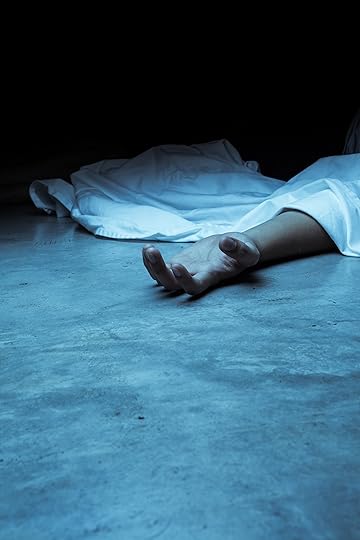 Owen and his wife, horrified, stood still and watched him. The ticking of the eight-day clock, audible in the strange silence that seemed to obtain in spite of the pattering bail and moaning wind, fell on their ear with a weird persistence. How long they stood grouped thus neither Owen Mr his wife could afterward tell, but at last Mrs, Owen stepped forward and touched the sailor quietly on the shoulder.He turned fiercely round and glared at her with wild, bloodshot eyes, in silence. “Dafydd” she whispered, “Dafydd, don't you know me?”“Ha, ha ha!” laughed Dafydd, “ha, ha ha, ha!” A Merry Christmas to you! Ha, ha, ha!"They removed him, raving, to an asylum, where, with wild laughter that was almost incessant, be endured for a time, and died.And every, Christmas Eve, at the same hour" concludes the written chronicle sadly, proceeding apparently from the open door at the foot of the stairs in Iwrwg Felin Ddu is heard a wild" Ha, ha, ha! A Merry Christmas to you I Ha, ha, ha!."The End.
Owen and his wife, horrified, stood still and watched him. The ticking of the eight-day clock, audible in the strange silence that seemed to obtain in spite of the pattering bail and moaning wind, fell on their ear with a weird persistence. How long they stood grouped thus neither Owen Mr his wife could afterward tell, but at last Mrs, Owen stepped forward and touched the sailor quietly on the shoulder.He turned fiercely round and glared at her with wild, bloodshot eyes, in silence. “Dafydd” she whispered, “Dafydd, don't you know me?”“Ha, ha ha!” laughed Dafydd, “ha, ha ha, ha!” A Merry Christmas to you! Ha, ha, ha!"They removed him, raving, to an asylum, where, with wild laughter that was almost incessant, be endured for a time, and died.And every, Christmas Eve, at the same hour" concludes the written chronicle sadly, proceeding apparently from the open door at the foot of the stairs in Iwrwg Felin Ddu is heard a wild" Ha, ha, ha! A Merry Christmas to you I Ha, ha, ha!."The End.
Published on November 13, 2017 06:35
November 9, 2017
Watch out for THE BOGEYMAN!
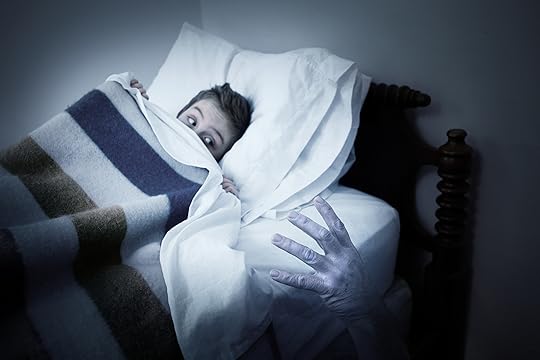 Where you ever told as a child, that if you misbehave, the Bogeyman would come and get you? The threat has been widely used across the world in various differing terms, but, who is the Bogeyman and where did the word come from?In the U.S he is referred to as Boogyman or Boogieman, but we are still talking about the same character, used to force children into behaving! Pretty much though, our concepts of what he looks like vary and he has no specific set appearance. He is literally a generic incarnation of fear. Sometimes, he is thought to be the Devil himself. It is, however, taken that he is a male or at least gender-less.The origins of the word Bogey or Boogie could have emerged from many different sources. I will look specifically at British Bogeyman and suspect there may be a link to the middle English word for bugbear which is bogge or bugge. In the 19th century, Old Bogey was a common term for the Devil whose realm is Bogydom. Bogey is also cognate with the old Welsh word bwg which means hobgoblin or ghost.In regions around the UK, other entities were used as alternatives to Bogeyman to terrify children into being good. In East Yorkshire children tempted to steal apples from orchards would be told that the fairy Awd Goggie would eat them!Tom Dockin was another name that would be mentioned to strike fear into the hearts of young children, he had iron teeth that he used to crunch the bones of young children. Mumpoker and Tankerabogus would drag children into their deepest darkest lairs, and Tom Poker lived under the stairs and in wardrobes. In Scotland, it was said that the Bodach would come from inside the chimney to take children away if they were disobedient.The threat of Bogeymen didn’t exclude all female entities, however, oh no for there were evil characters that also liked to kidnap naughty children! Grindylow, Jenny Greenteeth, and Nelly Longarms were grotesque hags that live in deep ponds and rivers waiting for an opportunity to grab a tasty young child beneath the water if they got too close to the edge.It sounds like a pretty horrendous way to discipline your children to modern parents, and the thought of telling young impressionable minds that something so awful might be waiting to drag them away seems kinda harsh!However, it is worth bearing in mind that years ago parents had fewer means to protect their children from harm, and it wasn’t always thought appropriate to explain things to children in understandable terms as Super-nanny would advocate doing today. Many children would be allowed to play outdoors for hours on end with no means of communication like we have nowadays to let their parents know where they were or if they had got into trouble, so indoctrinating a fear of playing near water or fires seems like a good idea.Most of the behavior that was warned against would be incredibly dangerous and have severe consequences, for example stealing apples would have held a harsh punishment in days gone by. Maybe the warnings of these horrific characters were a wise idea dreamt up by smart parents, and who knows despite the nightmares they must have caused at least they knew their little ones were safe, and there was at least a moral to each story!
Where you ever told as a child, that if you misbehave, the Bogeyman would come and get you? The threat has been widely used across the world in various differing terms, but, who is the Bogeyman and where did the word come from?In the U.S he is referred to as Boogyman or Boogieman, but we are still talking about the same character, used to force children into behaving! Pretty much though, our concepts of what he looks like vary and he has no specific set appearance. He is literally a generic incarnation of fear. Sometimes, he is thought to be the Devil himself. It is, however, taken that he is a male or at least gender-less.The origins of the word Bogey or Boogie could have emerged from many different sources. I will look specifically at British Bogeyman and suspect there may be a link to the middle English word for bugbear which is bogge or bugge. In the 19th century, Old Bogey was a common term for the Devil whose realm is Bogydom. Bogey is also cognate with the old Welsh word bwg which means hobgoblin or ghost.In regions around the UK, other entities were used as alternatives to Bogeyman to terrify children into being good. In East Yorkshire children tempted to steal apples from orchards would be told that the fairy Awd Goggie would eat them!Tom Dockin was another name that would be mentioned to strike fear into the hearts of young children, he had iron teeth that he used to crunch the bones of young children. Mumpoker and Tankerabogus would drag children into their deepest darkest lairs, and Tom Poker lived under the stairs and in wardrobes. In Scotland, it was said that the Bodach would come from inside the chimney to take children away if they were disobedient.The threat of Bogeymen didn’t exclude all female entities, however, oh no for there were evil characters that also liked to kidnap naughty children! Grindylow, Jenny Greenteeth, and Nelly Longarms were grotesque hags that live in deep ponds and rivers waiting for an opportunity to grab a tasty young child beneath the water if they got too close to the edge.It sounds like a pretty horrendous way to discipline your children to modern parents, and the thought of telling young impressionable minds that something so awful might be waiting to drag them away seems kinda harsh!However, it is worth bearing in mind that years ago parents had fewer means to protect their children from harm, and it wasn’t always thought appropriate to explain things to children in understandable terms as Super-nanny would advocate doing today. Many children would be allowed to play outdoors for hours on end with no means of communication like we have nowadays to let their parents know where they were or if they had got into trouble, so indoctrinating a fear of playing near water or fires seems like a good idea.Most of the behavior that was warned against would be incredibly dangerous and have severe consequences, for example stealing apples would have held a harsh punishment in days gone by. Maybe the warnings of these horrific characters were a wise idea dreamt up by smart parents, and who knows despite the nightmares they must have caused at least they knew their little ones were safe, and there was at least a moral to each story!
Published on November 09, 2017 08:42
November 7, 2017
Superstitious Suppers and Devilish Dinners
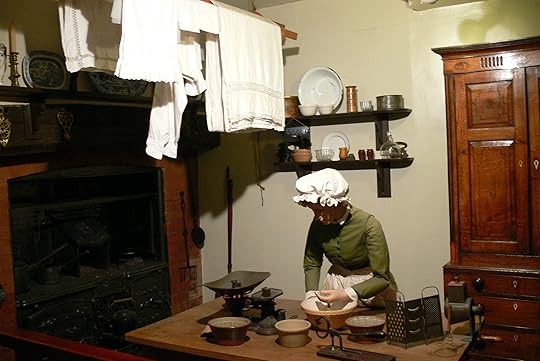 Once upon a time, in Britain, there were many bizarre folklore tales about food and kitchen magic, with superstitions being adhered to, for a great fear of reprisal may fall upon those who did not take heed of the old wives’ tales.Many housewives believed that to stir a pot of food “widdershins” meaning in the opposite direction to the sun, meant that the food would spoil. The reason for this being that they believed witches danced in this way.You may have heard the saying “a watched pot never boils”? But ever wondered where it came from? In Dorset, it is common knowledge that a slow boiling kettle is bewitched and may contain a toad!It was ill-advised to ever throw egg shells onto a fire because it would cause your chickens to stop laying or even worse, create a storm out at sea and anyone that burned bread was said to have “fed the devil.”It was said to never sharpen a knife after the sun sets because this attracts misfortune and even worse, it was believed to attract murderers or thieves to the house.When baking bread, it was and still is common to mark a cross on the top, but maybe you didn’t know that this was said to “let the devil out”?In Yorkshire, housewives used to swear that bread dough would not prove if they had a corpse in the house too. If someone cut both ends off the loaf, the devil would be sure to fly over your home as well, so be warned!Salt has fantastic food preserving properties, and it is probably because of this that the next superstition arose. To spill salt would be said to anger providence, remember Judas dropping the salt during the last supper? It is an omen of bad luck, but this is commonly thought to be counteracted by the act of throwing salt over the left shoulder to throw dust into the eyes of the devil, who sits on your left shoulder. Remember which is your left and right however because to throw salt over your right shoulder would be to throw it into the eyes of your guardian angel.Some other strange omens about food were that eating marrow bone from pork would make you go mad as would combining mushrooms with almond icing! I would love to know who tried this combination the first place because it sounds positively revolting!A double-yolked egg, I always thought was lucky however this is not the case if you live in Somerset. It was felt that if you get a double yolk, then there would be a shotgun wedding shortly due to an unexpected pregnancy!Beer was commonly brewed in barrels with an iron bar crossing them to ward off demons from spoiling the contents but being teetotal didn’t let you off the hook from other superstitions!Pouring tea from the pot after someone else had already poured it was considered a way to ensure pregnancy so depending on your hopes or fears that was possibly good or bad luck!
Once upon a time, in Britain, there were many bizarre folklore tales about food and kitchen magic, with superstitions being adhered to, for a great fear of reprisal may fall upon those who did not take heed of the old wives’ tales.Many housewives believed that to stir a pot of food “widdershins” meaning in the opposite direction to the sun, meant that the food would spoil. The reason for this being that they believed witches danced in this way.You may have heard the saying “a watched pot never boils”? But ever wondered where it came from? In Dorset, it is common knowledge that a slow boiling kettle is bewitched and may contain a toad!It was ill-advised to ever throw egg shells onto a fire because it would cause your chickens to stop laying or even worse, create a storm out at sea and anyone that burned bread was said to have “fed the devil.”It was said to never sharpen a knife after the sun sets because this attracts misfortune and even worse, it was believed to attract murderers or thieves to the house.When baking bread, it was and still is common to mark a cross on the top, but maybe you didn’t know that this was said to “let the devil out”?In Yorkshire, housewives used to swear that bread dough would not prove if they had a corpse in the house too. If someone cut both ends off the loaf, the devil would be sure to fly over your home as well, so be warned!Salt has fantastic food preserving properties, and it is probably because of this that the next superstition arose. To spill salt would be said to anger providence, remember Judas dropping the salt during the last supper? It is an omen of bad luck, but this is commonly thought to be counteracted by the act of throwing salt over the left shoulder to throw dust into the eyes of the devil, who sits on your left shoulder. Remember which is your left and right however because to throw salt over your right shoulder would be to throw it into the eyes of your guardian angel.Some other strange omens about food were that eating marrow bone from pork would make you go mad as would combining mushrooms with almond icing! I would love to know who tried this combination the first place because it sounds positively revolting!A double-yolked egg, I always thought was lucky however this is not the case if you live in Somerset. It was felt that if you get a double yolk, then there would be a shotgun wedding shortly due to an unexpected pregnancy!Beer was commonly brewed in barrels with an iron bar crossing them to ward off demons from spoiling the contents but being teetotal didn’t let you off the hook from other superstitions!Pouring tea from the pot after someone else had already poured it was considered a way to ensure pregnancy so depending on your hopes or fears that was possibly good or bad luck! 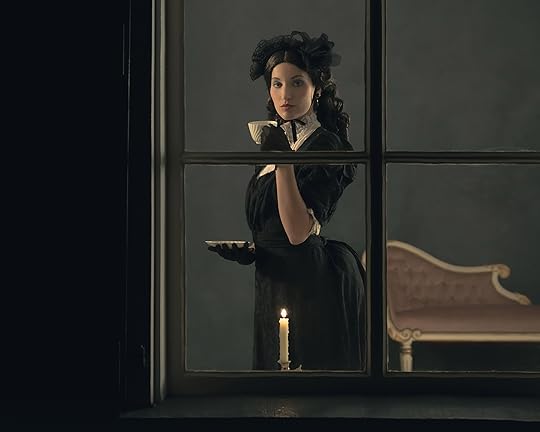 Another belief was that you added sugar to your teacup before adding the milk than tea because adding the sugar after the liquid meant a broken romance. Accidentally placing two teaspoons into your cup, however, was a great omen and betokened a wedding shortly!Bon Appetit!
Another belief was that you added sugar to your teacup before adding the milk than tea because adding the sugar after the liquid meant a broken romance. Accidentally placing two teaspoons into your cup, however, was a great omen and betokened a wedding shortly!Bon Appetit!
Published on November 07, 2017 09:42
November 5, 2017
The Haunting of Bank House, Lampeter
During some research this week I stumbled across the most enthralling story in Welsh newspaper archives of a haunting taking place in an old house named “Bank House” situated in the town of Lampeter during 1905.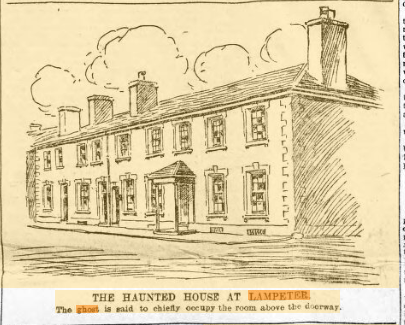 The house was previously a Bank and an Inn and located on the High Street. In 1905 it was occupied by a tenant named Mr. H. W. Howells, who was a solicitor, the county court registrar, so undoubtedly a well respected local man.The story reported was that it was Howells eleven-year-old son, Jacky who was the chief conduit to the spirit of a ghost that communicated using a series of taps on the wall next to his bed. So terrifying was the extent of the haunting, that passers-by would stop and inquire as to the strange noises that were emanating from the house. A terrified housemaid by the name of Jane testified that she heard an unnerving humming noise in the corridors and knocking sounds coming from the walls, and so she refused to sleep in the garret after hearing "the tramping of feet and other sounds" coming from there. One old woman from the village claimed that the ghostly goings-on was nothing new as a previous occupant had experienced hauntings that could only be described as poltergeist activity in the past.
The house was previously a Bank and an Inn and located on the High Street. In 1905 it was occupied by a tenant named Mr. H. W. Howells, who was a solicitor, the county court registrar, so undoubtedly a well respected local man.The story reported was that it was Howells eleven-year-old son, Jacky who was the chief conduit to the spirit of a ghost that communicated using a series of taps on the wall next to his bed. So terrifying was the extent of the haunting, that passers-by would stop and inquire as to the strange noises that were emanating from the house. A terrified housemaid by the name of Jane testified that she heard an unnerving humming noise in the corridors and knocking sounds coming from the walls, and so she refused to sleep in the garret after hearing "the tramping of feet and other sounds" coming from there. One old woman from the village claimed that the ghostly goings-on was nothing new as a previous occupant had experienced hauntings that could only be described as poltergeist activity in the past. 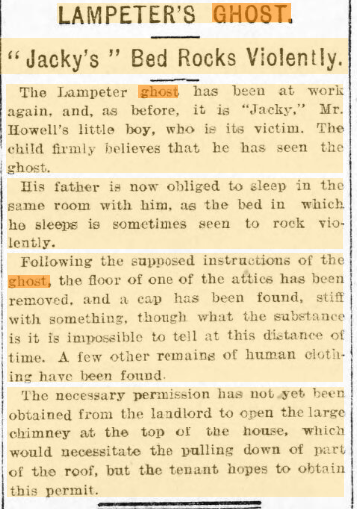 Jackie told of seeing an apparition of a woman dressed in black appearing in front of him and claimed that his bed would shake violently during the night. So petrified was the unfortunate child that his father was forced to sleep in the same room to keep him safe. At first, his father was reluctant to accept as real the stories, however, after one particularly active evening, he told the newspaper correspondent that he had managed to communicate with the spirit using tapping. Seemingly he had even got the ghost to tap out the tune of "Say, Au Revoir" and so was forced into believing his son after that!
Jackie told of seeing an apparition of a woman dressed in black appearing in front of him and claimed that his bed would shake violently during the night. So petrified was the unfortunate child that his father was forced to sleep in the same room to keep him safe. At first, his father was reluctant to accept as real the stories, however, after one particularly active evening, he told the newspaper correspondent that he had managed to communicate with the spirit using tapping. Seemingly he had even got the ghost to tap out the tune of "Say, Au Revoir" and so was forced into believing his son after that!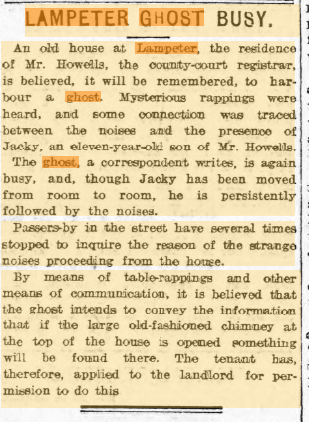 On another instance, Mr. Howells said that his son's bed began to shake so violently that he could not hold the bed still and he could feel the force squirming to get loose as he attempted to restrain the bed. Wherever they moved Jacky, the haunting would follow. Eventually, the family called in The Bishop of Swansea to investigate who arrived with Professor Harris of St Davids College and half a dozen other people. The party commenced a meeting in the dining room of Bank house and then were invited to go to Jacky's bedroom to witness the ghost. The scene was recreated with Jacky in his bed, and the blinds were drawn, and the light dimmed in the room. Jackie proceeded to demonstrate to the amazed onlookers how he communicated with the ghost by tapping on the walls and getting an intelligent response back. The manifestation did not happen instantly, the story tells how at first nothing happened, and it was decided that a "skeptic" must be present. The Bishop and a few others had to leave the room before the communication started. It was eventually determined, via the use of this tapping yes and no answers that the ghost was trying to tell them of some hidden money, concealed within the chimney breast of the property. The Bishop was sadly unable to witness the phenomenon for himself and remained tight-lipped about the whole situation afterward. There are several reports around the early part of 1905 and suggestions that the tenant had attempted to gain permission from the landlord to knock out the chimney breast, but unfortunately, I could not find any further reports of the ghostly happenings!I would love to know if anyone is aware of the conclusion to the story and indeed if "Bank House" still exists today, so Lampeter residents, please get in touch if you can shed any more light on the mystery that is the Lampeter Ghost!
On another instance, Mr. Howells said that his son's bed began to shake so violently that he could not hold the bed still and he could feel the force squirming to get loose as he attempted to restrain the bed. Wherever they moved Jacky, the haunting would follow. Eventually, the family called in The Bishop of Swansea to investigate who arrived with Professor Harris of St Davids College and half a dozen other people. The party commenced a meeting in the dining room of Bank house and then were invited to go to Jacky's bedroom to witness the ghost. The scene was recreated with Jacky in his bed, and the blinds were drawn, and the light dimmed in the room. Jackie proceeded to demonstrate to the amazed onlookers how he communicated with the ghost by tapping on the walls and getting an intelligent response back. The manifestation did not happen instantly, the story tells how at first nothing happened, and it was decided that a "skeptic" must be present. The Bishop and a few others had to leave the room before the communication started. It was eventually determined, via the use of this tapping yes and no answers that the ghost was trying to tell them of some hidden money, concealed within the chimney breast of the property. The Bishop was sadly unable to witness the phenomenon for himself and remained tight-lipped about the whole situation afterward. There are several reports around the early part of 1905 and suggestions that the tenant had attempted to gain permission from the landlord to knock out the chimney breast, but unfortunately, I could not find any further reports of the ghostly happenings!I would love to know if anyone is aware of the conclusion to the story and indeed if "Bank House" still exists today, so Lampeter residents, please get in touch if you can shed any more light on the mystery that is the Lampeter Ghost!
 The house was previously a Bank and an Inn and located on the High Street. In 1905 it was occupied by a tenant named Mr. H. W. Howells, who was a solicitor, the county court registrar, so undoubtedly a well respected local man.The story reported was that it was Howells eleven-year-old son, Jacky who was the chief conduit to the spirit of a ghost that communicated using a series of taps on the wall next to his bed. So terrifying was the extent of the haunting, that passers-by would stop and inquire as to the strange noises that were emanating from the house. A terrified housemaid by the name of Jane testified that she heard an unnerving humming noise in the corridors and knocking sounds coming from the walls, and so she refused to sleep in the garret after hearing "the tramping of feet and other sounds" coming from there. One old woman from the village claimed that the ghostly goings-on was nothing new as a previous occupant had experienced hauntings that could only be described as poltergeist activity in the past.
The house was previously a Bank and an Inn and located on the High Street. In 1905 it was occupied by a tenant named Mr. H. W. Howells, who was a solicitor, the county court registrar, so undoubtedly a well respected local man.The story reported was that it was Howells eleven-year-old son, Jacky who was the chief conduit to the spirit of a ghost that communicated using a series of taps on the wall next to his bed. So terrifying was the extent of the haunting, that passers-by would stop and inquire as to the strange noises that were emanating from the house. A terrified housemaid by the name of Jane testified that she heard an unnerving humming noise in the corridors and knocking sounds coming from the walls, and so she refused to sleep in the garret after hearing "the tramping of feet and other sounds" coming from there. One old woman from the village claimed that the ghostly goings-on was nothing new as a previous occupant had experienced hauntings that could only be described as poltergeist activity in the past.  Jackie told of seeing an apparition of a woman dressed in black appearing in front of him and claimed that his bed would shake violently during the night. So petrified was the unfortunate child that his father was forced to sleep in the same room to keep him safe. At first, his father was reluctant to accept as real the stories, however, after one particularly active evening, he told the newspaper correspondent that he had managed to communicate with the spirit using tapping. Seemingly he had even got the ghost to tap out the tune of "Say, Au Revoir" and so was forced into believing his son after that!
Jackie told of seeing an apparition of a woman dressed in black appearing in front of him and claimed that his bed would shake violently during the night. So petrified was the unfortunate child that his father was forced to sleep in the same room to keep him safe. At first, his father was reluctant to accept as real the stories, however, after one particularly active evening, he told the newspaper correspondent that he had managed to communicate with the spirit using tapping. Seemingly he had even got the ghost to tap out the tune of "Say, Au Revoir" and so was forced into believing his son after that! On another instance, Mr. Howells said that his son's bed began to shake so violently that he could not hold the bed still and he could feel the force squirming to get loose as he attempted to restrain the bed. Wherever they moved Jacky, the haunting would follow. Eventually, the family called in The Bishop of Swansea to investigate who arrived with Professor Harris of St Davids College and half a dozen other people. The party commenced a meeting in the dining room of Bank house and then were invited to go to Jacky's bedroom to witness the ghost. The scene was recreated with Jacky in his bed, and the blinds were drawn, and the light dimmed in the room. Jackie proceeded to demonstrate to the amazed onlookers how he communicated with the ghost by tapping on the walls and getting an intelligent response back. The manifestation did not happen instantly, the story tells how at first nothing happened, and it was decided that a "skeptic" must be present. The Bishop and a few others had to leave the room before the communication started. It was eventually determined, via the use of this tapping yes and no answers that the ghost was trying to tell them of some hidden money, concealed within the chimney breast of the property. The Bishop was sadly unable to witness the phenomenon for himself and remained tight-lipped about the whole situation afterward. There are several reports around the early part of 1905 and suggestions that the tenant had attempted to gain permission from the landlord to knock out the chimney breast, but unfortunately, I could not find any further reports of the ghostly happenings!I would love to know if anyone is aware of the conclusion to the story and indeed if "Bank House" still exists today, so Lampeter residents, please get in touch if you can shed any more light on the mystery that is the Lampeter Ghost!
On another instance, Mr. Howells said that his son's bed began to shake so violently that he could not hold the bed still and he could feel the force squirming to get loose as he attempted to restrain the bed. Wherever they moved Jacky, the haunting would follow. Eventually, the family called in The Bishop of Swansea to investigate who arrived with Professor Harris of St Davids College and half a dozen other people. The party commenced a meeting in the dining room of Bank house and then were invited to go to Jacky's bedroom to witness the ghost. The scene was recreated with Jacky in his bed, and the blinds were drawn, and the light dimmed in the room. Jackie proceeded to demonstrate to the amazed onlookers how he communicated with the ghost by tapping on the walls and getting an intelligent response back. The manifestation did not happen instantly, the story tells how at first nothing happened, and it was decided that a "skeptic" must be present. The Bishop and a few others had to leave the room before the communication started. It was eventually determined, via the use of this tapping yes and no answers that the ghost was trying to tell them of some hidden money, concealed within the chimney breast of the property. The Bishop was sadly unable to witness the phenomenon for himself and remained tight-lipped about the whole situation afterward. There are several reports around the early part of 1905 and suggestions that the tenant had attempted to gain permission from the landlord to knock out the chimney breast, but unfortunately, I could not find any further reports of the ghostly happenings!I would love to know if anyone is aware of the conclusion to the story and indeed if "Bank House" still exists today, so Lampeter residents, please get in touch if you can shed any more light on the mystery that is the Lampeter Ghost!
Published on November 05, 2017 08:37
October 24, 2017
Omens in the Fire
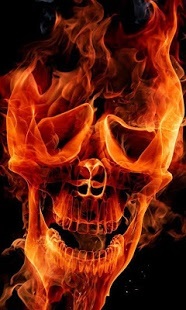 The Folklore of Fire-gazingThe weather is closing in on us, and as we reach the pinnacle of autumn, many of us have put the central heating on for the first time in months.If you are lucky enough to have a real fire in your home, you will relish the heartening smell of logs burning and crackling in the hearth, warming your toes in front of the fire must be one of the lives most comforting ways to relax in my opinion!But have you ever found yourself staring into the dancing flames and seeing shapes or become mesmerized by the hypnotic flickering blue, yellow-orange and white blaze? Well, you may be surprised to know that the practice of fire-gazing was once a method of foretelling the future many centuries ago.Folk would gather around the hearth and peer into the depths of the fire, and decide omens from the irregular movements of the coals and burning soot.A flake of soot hanging from the grate was said to foretell the arrival of a stranger; while coals burning in a pile with a hollow center or split into two parts would signify a parting of ways.Escaping gas spluttering from a piece of coal hissing and spitting means a quarrel is imminent for someone in the household, but this can be avoided by vigorously poking the fire.If you lived in Dorset, a stranger is anticipated if you see a smoldering fire suddenly burst into flames, while in Lincolnshire, people thought that a death was imminent if a neglected fire burns for a long time. A glowing coal that rolls out of the grate signifies that a wedding will be announced, and a tall smoking flame indicates terrible news. Do not spit on a hearth as this action will bring seven years bad luck!
The Folklore of Fire-gazingThe weather is closing in on us, and as we reach the pinnacle of autumn, many of us have put the central heating on for the first time in months.If you are lucky enough to have a real fire in your home, you will relish the heartening smell of logs burning and crackling in the hearth, warming your toes in front of the fire must be one of the lives most comforting ways to relax in my opinion!But have you ever found yourself staring into the dancing flames and seeing shapes or become mesmerized by the hypnotic flickering blue, yellow-orange and white blaze? Well, you may be surprised to know that the practice of fire-gazing was once a method of foretelling the future many centuries ago.Folk would gather around the hearth and peer into the depths of the fire, and decide omens from the irregular movements of the coals and burning soot.A flake of soot hanging from the grate was said to foretell the arrival of a stranger; while coals burning in a pile with a hollow center or split into two parts would signify a parting of ways.Escaping gas spluttering from a piece of coal hissing and spitting means a quarrel is imminent for someone in the household, but this can be avoided by vigorously poking the fire.If you lived in Dorset, a stranger is anticipated if you see a smoldering fire suddenly burst into flames, while in Lincolnshire, people thought that a death was imminent if a neglected fire burns for a long time. A glowing coal that rolls out of the grate signifies that a wedding will be announced, and a tall smoking flame indicates terrible news. Do not spit on a hearth as this action will bring seven years bad luck!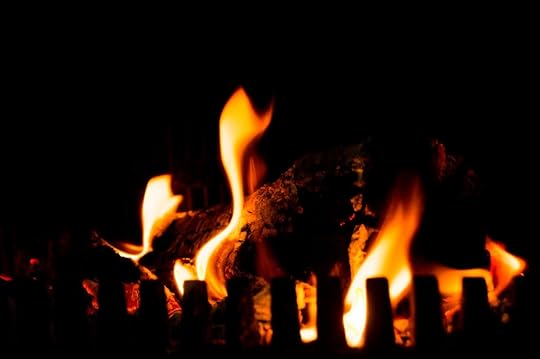 Cinders that float out of the fire can have numerous meanings. Generally – look at the shape. If there is an oval shape then this is regarded as a sign of birth, an oblong shape spells good luck and prosperity. In East Anglia – people would spit on the cinders to see if the crackles, it was good news if they did, for that meant money coming your way however if not – it meant death.Poking the fire when visiting a new house in Yorkshire brings good luck to the family, and this was a widespread superstition. However, this was only a ritual to be undertaken by guests that have been acquainted with the family for more than seven years. Otherwise, the reverse is true!Credits to Folklore, Myths and Legends of Britain
Cinders that float out of the fire can have numerous meanings. Generally – look at the shape. If there is an oval shape then this is regarded as a sign of birth, an oblong shape spells good luck and prosperity. In East Anglia – people would spit on the cinders to see if the crackles, it was good news if they did, for that meant money coming your way however if not – it meant death.Poking the fire when visiting a new house in Yorkshire brings good luck to the family, and this was a widespread superstition. However, this was only a ritual to be undertaken by guests that have been acquainted with the family for more than seven years. Otherwise, the reverse is true!Credits to Folklore, Myths and Legends of Britain
Published on October 24, 2017 09:47
October 22, 2017
"When Grave-Yards Yawn in Gilwern"
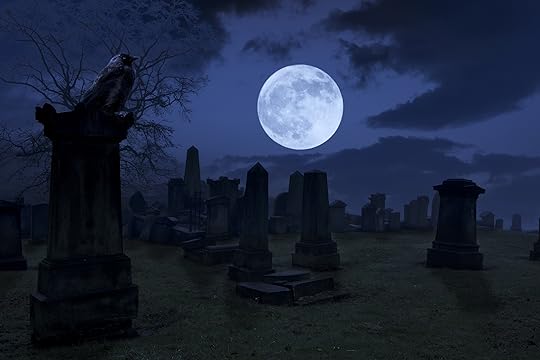 This week I have been busy researching and looking for material for a book I have planned, and that inevitably results in me searching through the Welsh Newspaper archives for inspiration! I wasn't disappointed - and a search of the word "Strange" and "Gilwern" (a locality of mine) brought me this little gem of a story which will have been long forgotten in the village!. Taken from the 9th March 1867 issue of The Brecon County Times the following ghost story was reported. This will have taken place near my home and I suspect I know the churchyard to which he would have attended the funeral.
This week I have been busy researching and looking for material for a book I have planned, and that inevitably results in me searching through the Welsh Newspaper archives for inspiration! I wasn't disappointed - and a search of the word "Strange" and "Gilwern" (a locality of mine) brought me this little gem of a story which will have been long forgotten in the village!. Taken from the 9th March 1867 issue of The Brecon County Times the following ghost story was reported. This will have taken place near my home and I suspect I know the churchyard to which he would have attended the funeral. 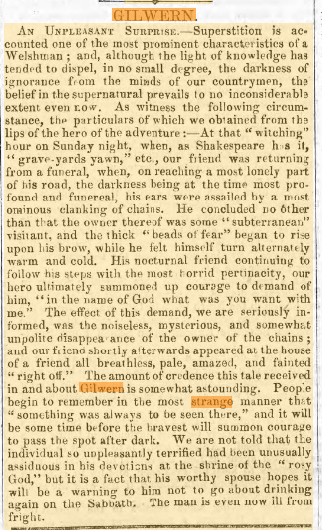 This poor man had been drinking at a wake after a funeral and whilst walking home in the dark during "witching hour" he sensed the presence of a ghost clanking chains!. He concluded no other than the owner thereof was some "subterranean" visitation and the thick "beads of fear" began to rise upon his brow...". The folk of Gilwern Village supported his account by adding their own suspicions that something supernatural was "always to be seen there".I hope the poor man recovered from his fright of which he apparently "fainted right off" and the ear bashing it seems his wife gave him!.
This poor man had been drinking at a wake after a funeral and whilst walking home in the dark during "witching hour" he sensed the presence of a ghost clanking chains!. He concluded no other than the owner thereof was some "subterranean" visitation and the thick "beads of fear" began to rise upon his brow...". The folk of Gilwern Village supported his account by adding their own suspicions that something supernatural was "always to be seen there".I hope the poor man recovered from his fright of which he apparently "fainted right off" and the ear bashing it seems his wife gave him!.
Published on October 22, 2017 09:10
October 17, 2017
Abergavenny Folklore ~ "Will-o'-the-wisp" Sion Dafydd
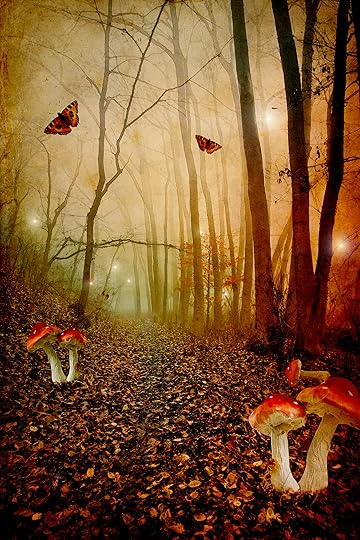 An interesting extract I found in a book called "Folklore, Myths and Legends of Britain" - a Readers Digest published in 1973. I purchased the first edition on eBay and and delighted with this tattered and falling apart book, it's pages are folklore gold and it is a plethora of forgotten tales that you won't find anywhere on the web. I want to share this one with you.."Long ago, a man called Sion Ddfydd, who lived in the hills above Abergavenny, was in league with the Devil. He had arranged with the Devil that his soul was safe as long as he was touching something rooted in the earth, and many times Satan tried to catch him and failed. In the end, because he was too evil to go to Heaven but too clever to be trapped by the Devil, he became a "Will-O'-the Wisp." A will-o'-the wisp is a type of ghost light, "possibly orb" type light, most likely elemental and seen as a light at night time sometimes hovering over water or marshes and in graveyards. It flickers like a lamp and tempts travelers from their safe paths. Other names for similar entities are jack-o'-lantern, friar's lantern, hinkypunk, hobby lanterns, and they are widespread among world wide folklore tales. They will vary in their names and stories however there are striking similarities in the actual description of the entity. You can read more about other will-o'-the wisp stories here.
An interesting extract I found in a book called "Folklore, Myths and Legends of Britain" - a Readers Digest published in 1973. I purchased the first edition on eBay and and delighted with this tattered and falling apart book, it's pages are folklore gold and it is a plethora of forgotten tales that you won't find anywhere on the web. I want to share this one with you.."Long ago, a man called Sion Ddfydd, who lived in the hills above Abergavenny, was in league with the Devil. He had arranged with the Devil that his soul was safe as long as he was touching something rooted in the earth, and many times Satan tried to catch him and failed. In the end, because he was too evil to go to Heaven but too clever to be trapped by the Devil, he became a "Will-O'-the Wisp." A will-o'-the wisp is a type of ghost light, "possibly orb" type light, most likely elemental and seen as a light at night time sometimes hovering over water or marshes and in graveyards. It flickers like a lamp and tempts travelers from their safe paths. Other names for similar entities are jack-o'-lantern, friar's lantern, hinkypunk, hobby lanterns, and they are widespread among world wide folklore tales. They will vary in their names and stories however there are striking similarities in the actual description of the entity. You can read more about other will-o'-the wisp stories here.
Published on October 17, 2017 02:37
October 15, 2017
Dark Celtic Traditions of Halloween
“It is the night of nights in the year when the spirits of the dead take deep delight to walk abroad and disturb trembling humanity.”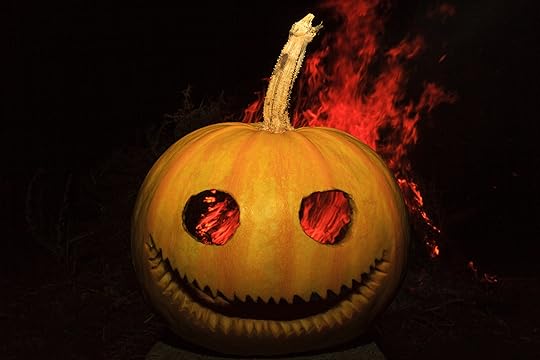 Claire Barrand explores the dark history of Halloween in Welsh and Celtic culture.Halloween or Hallowe’en is upon us once more, it is soon once again the night of 31st October. A time when many deem that the veil between us and the spirit world is thin and the dead can make contact with the physical world, a night when magic is at its most powerful.Costumes, face paint, and décor get more elaborate each year as children dress up and traditionally knock on the neighbourhood doors calling “trick or treat” in exchange for copious amounts of candy or sweets. But how many of the young generation are aware that the origins of these celebrations are far from new and in fact date back thousands of years, to pagan times?The origins of Halloween can be traced back to the ancient Celtic festival of Samhain. (pronounced SAH-win or SOW-in -a Gaelic word meaning ‘Summer’s End’) In Wales, this was known as. “Nos Calan Gaeaf” This is the most popular Halloween tradition in Wales. The Welsh translation, interestingly, is ‘the first of winter.' Until 2,000 years ago, the Celts lived in the lands we now know as Britain, Ireland, and Northern France. Primarily populated by farming and agricultural people, the Pre-Christian Celtic year was determined by the growing seasons, and Samhain marked the end of summer and the harvest and the beginning of the dark, cold winter. The festival literally symbolised the boundary between the world of the living and the world of the dead. November 1st was considered the end of the summer, and the start of the month of death in the Celtic calendar, the date on which the herds were returned from pasture and animals were slaughtered to provide meat for winter. Indeed, the Modern Welsh for November Tachwedd literally means ‘The Month of Slaughter.'It was thought by the Celts that on the night of 31st October, ghosts of their dead would rise and large bonfires were lit in each village to ward off any evil spirits that may also be at large. Their flames, smoke, and ashes were considered to have protective and cleansing powers and were also used for divination. Sometimes, torches lit from the bonfire were carried sun-wise around homes and fields to protect them. It is possible that the fires were a kind of imitative or sympathetic magic they mimicked the Sun, defeating the darkness of winter.One tradition observed would be where each member of the family would throw into the blazing fire, a white stone each with an initial on it. Next morning, among the charred ashes these rocks are sought for, and if one of them has disappeared, it is believed that the unlucky thrower will never see another All Saints’ Day.It was not only ghosts that people feared on Halloween night as it was also believed that the Aos Sí (pronounced ees shee), the 'spirits' or 'fae” were more active. Both respected and feared people would invoke God’s protection for their homes. Offerings of food and drink would be left out to appease the fae and even an extra place set at the table and by the fireside to welcome them.Druids would have led Samhain celebrations in these early times. They would have ensured that the hearth fire of each house was re-lit from the embers of the sacred bonfire, to help protect the people and keep them warm through the forthcoming long, dark winter months.Carved Jack O lanterns were in fact made initially from turnips. There is a famous Irish Christian folktale associated with the jack-o'-lantern, which in folklore is said to signify a "soul who has been denied entry into both heaven and hell, and the lamps were lit to guide the dead back to earth. The Celts also kitted out in costumes, but they would have worn animal skins, masks, and other disguises to avoid being recognised by the ghosts thought to be present. Halloween was also a time when fortune telling was popular. Different traditions included apple bobbing, scrying or mirror-gazing, pouring molten lead or egg whites into the water, and dream interpretation.When in the later years Christianity overtook as the most popular religion, they introduced “All Hallows’ Day,” also known as “All Saints Day,” a day to remember those who had died for their beliefs. This this was in fact initially celebrated on 13th May until Pope Gregory had the date of the All Hallows’ feast moved to 1st November in the 8th century.The night or evening of Samhain, therefore, became known as All-hallows-eve then Hallow Eve, still later Hallowe’en and then of course Halloween. In the eleventh century, a new festival was added to the calendar; All Souls Day on 2 November. The three celebrations of All-Hallows Eve, All Saints and All Souls collectively became known as “Hallowmas.”The custom of “trick-or-treating” evolved during the Middle Ages when beggars would travel from village to village and beg for “soul cakes.” It was customary for town criers dressed in black to walk the streets, ringing a bell and calling on Christians to remember the dead. "Souling" was the custom of baking and sharing soul cakes and prayers for all christened souls.Fire sticks and torches and bonfires had a further grim significance on the eve of All Saints' Day.Queen Mab is a fairy referred to in Shakespeare's play Romeo and Juliet, where she is the “fairies' midwife,” described as a small creature who performs midnight pranks upon sleepers, sometimes fulfilling desires but sometimes leaving nasty blisters on the lips should she so choose.The Daily Telegraph reported in 1882… “It may be all very foolish and inconsistent with the severity of this extremely matter-of-fact age, but there are scores of country folks, even of today, who have the utmost faith in the existence of some Queen Mab "that plats the manes of horses in the night, and bakes the elf locks in foul sluttish hairs, which once entangled much misfortune bodes."Such Mabs and elves and witches must be guarded against to ward off their evil eyes and mischievous influence. It is the fire that is their bane. Let the farmer carry a bunch of straw fired about his corn and all will be well with the crop; let him murmur some such incantation as “, Fire and red low light on my team now," and he is likely to avoid any subsequent danger or mischance; let the laborer light a torch and flash the fiery cross in the air, and away will fly the witches, baffled and undone”This is why fire sticks were among the most common asset of a well-considered Halloween. The same use was to be found in the scarlet -berries of the rowan tree or mountain ash, and in a coil of scarlet wool. They say in Scotland,“Rowan tree and red thread. To gar the witches and dance them dead,"Which, being interpreted, means to dance down until they die from exhaustion.Variations of these bonfire ceremonies were observed in all parts of the country. The love ceremonies in connection with Halloween are almost as numerous as those connected with St. Valentine's Day, and apples, as well as nuts, play a curious part in the prediction of the destinies of young people. To burn two nuts side by side to see if the flame is mutual, steadfast, and enduring, or sudden, fitful, and impetuous, was common as was the old trick of flinging orange or apple peel over the shoulder to see what initial it would form. Many young women also believed that if they took a candle and stood in front of a mirror, where she had to eat an apple before it and comb her hair. If lucky, she will see the face of her future husband peeping over her shoulder.The Evening Express in 1910 observed,“It is the night of nights in the year when the spirits of the dead take deep delight to walk abroad and disturb trembling humanity.”Incidentally modern-day Pagans do not observe Halloween, but instead, observe Samhain on 1st November, so whatever your beliefs, I hope we can still have reverence for what is a historical and fascinating custom, understand that Halloween is not celebrated by everyone. Stay respectful of tradition and custom and above all have fun!
Claire Barrand explores the dark history of Halloween in Welsh and Celtic culture.Halloween or Hallowe’en is upon us once more, it is soon once again the night of 31st October. A time when many deem that the veil between us and the spirit world is thin and the dead can make contact with the physical world, a night when magic is at its most powerful.Costumes, face paint, and décor get more elaborate each year as children dress up and traditionally knock on the neighbourhood doors calling “trick or treat” in exchange for copious amounts of candy or sweets. But how many of the young generation are aware that the origins of these celebrations are far from new and in fact date back thousands of years, to pagan times?The origins of Halloween can be traced back to the ancient Celtic festival of Samhain. (pronounced SAH-win or SOW-in -a Gaelic word meaning ‘Summer’s End’) In Wales, this was known as. “Nos Calan Gaeaf” This is the most popular Halloween tradition in Wales. The Welsh translation, interestingly, is ‘the first of winter.' Until 2,000 years ago, the Celts lived in the lands we now know as Britain, Ireland, and Northern France. Primarily populated by farming and agricultural people, the Pre-Christian Celtic year was determined by the growing seasons, and Samhain marked the end of summer and the harvest and the beginning of the dark, cold winter. The festival literally symbolised the boundary between the world of the living and the world of the dead. November 1st was considered the end of the summer, and the start of the month of death in the Celtic calendar, the date on which the herds were returned from pasture and animals were slaughtered to provide meat for winter. Indeed, the Modern Welsh for November Tachwedd literally means ‘The Month of Slaughter.'It was thought by the Celts that on the night of 31st October, ghosts of their dead would rise and large bonfires were lit in each village to ward off any evil spirits that may also be at large. Their flames, smoke, and ashes were considered to have protective and cleansing powers and were also used for divination. Sometimes, torches lit from the bonfire were carried sun-wise around homes and fields to protect them. It is possible that the fires were a kind of imitative or sympathetic magic they mimicked the Sun, defeating the darkness of winter.One tradition observed would be where each member of the family would throw into the blazing fire, a white stone each with an initial on it. Next morning, among the charred ashes these rocks are sought for, and if one of them has disappeared, it is believed that the unlucky thrower will never see another All Saints’ Day.It was not only ghosts that people feared on Halloween night as it was also believed that the Aos Sí (pronounced ees shee), the 'spirits' or 'fae” were more active. Both respected and feared people would invoke God’s protection for their homes. Offerings of food and drink would be left out to appease the fae and even an extra place set at the table and by the fireside to welcome them.Druids would have led Samhain celebrations in these early times. They would have ensured that the hearth fire of each house was re-lit from the embers of the sacred bonfire, to help protect the people and keep them warm through the forthcoming long, dark winter months.Carved Jack O lanterns were in fact made initially from turnips. There is a famous Irish Christian folktale associated with the jack-o'-lantern, which in folklore is said to signify a "soul who has been denied entry into both heaven and hell, and the lamps were lit to guide the dead back to earth. The Celts also kitted out in costumes, but they would have worn animal skins, masks, and other disguises to avoid being recognised by the ghosts thought to be present. Halloween was also a time when fortune telling was popular. Different traditions included apple bobbing, scrying or mirror-gazing, pouring molten lead or egg whites into the water, and dream interpretation.When in the later years Christianity overtook as the most popular religion, they introduced “All Hallows’ Day,” also known as “All Saints Day,” a day to remember those who had died for their beliefs. This this was in fact initially celebrated on 13th May until Pope Gregory had the date of the All Hallows’ feast moved to 1st November in the 8th century.The night or evening of Samhain, therefore, became known as All-hallows-eve then Hallow Eve, still later Hallowe’en and then of course Halloween. In the eleventh century, a new festival was added to the calendar; All Souls Day on 2 November. The three celebrations of All-Hallows Eve, All Saints and All Souls collectively became known as “Hallowmas.”The custom of “trick-or-treating” evolved during the Middle Ages when beggars would travel from village to village and beg for “soul cakes.” It was customary for town criers dressed in black to walk the streets, ringing a bell and calling on Christians to remember the dead. "Souling" was the custom of baking and sharing soul cakes and prayers for all christened souls.Fire sticks and torches and bonfires had a further grim significance on the eve of All Saints' Day.Queen Mab is a fairy referred to in Shakespeare's play Romeo and Juliet, where she is the “fairies' midwife,” described as a small creature who performs midnight pranks upon sleepers, sometimes fulfilling desires but sometimes leaving nasty blisters on the lips should she so choose.The Daily Telegraph reported in 1882… “It may be all very foolish and inconsistent with the severity of this extremely matter-of-fact age, but there are scores of country folks, even of today, who have the utmost faith in the existence of some Queen Mab "that plats the manes of horses in the night, and bakes the elf locks in foul sluttish hairs, which once entangled much misfortune bodes."Such Mabs and elves and witches must be guarded against to ward off their evil eyes and mischievous influence. It is the fire that is their bane. Let the farmer carry a bunch of straw fired about his corn and all will be well with the crop; let him murmur some such incantation as “, Fire and red low light on my team now," and he is likely to avoid any subsequent danger or mischance; let the laborer light a torch and flash the fiery cross in the air, and away will fly the witches, baffled and undone”This is why fire sticks were among the most common asset of a well-considered Halloween. The same use was to be found in the scarlet -berries of the rowan tree or mountain ash, and in a coil of scarlet wool. They say in Scotland,“Rowan tree and red thread. To gar the witches and dance them dead,"Which, being interpreted, means to dance down until they die from exhaustion.Variations of these bonfire ceremonies were observed in all parts of the country. The love ceremonies in connection with Halloween are almost as numerous as those connected with St. Valentine's Day, and apples, as well as nuts, play a curious part in the prediction of the destinies of young people. To burn two nuts side by side to see if the flame is mutual, steadfast, and enduring, or sudden, fitful, and impetuous, was common as was the old trick of flinging orange or apple peel over the shoulder to see what initial it would form. Many young women also believed that if they took a candle and stood in front of a mirror, where she had to eat an apple before it and comb her hair. If lucky, she will see the face of her future husband peeping over her shoulder.The Evening Express in 1910 observed,“It is the night of nights in the year when the spirits of the dead take deep delight to walk abroad and disturb trembling humanity.”Incidentally modern-day Pagans do not observe Halloween, but instead, observe Samhain on 1st November, so whatever your beliefs, I hope we can still have reverence for what is a historical and fascinating custom, understand that Halloween is not celebrated by everyone. Stay respectful of tradition and custom and above all have fun!
 Claire Barrand explores the dark history of Halloween in Welsh and Celtic culture.Halloween or Hallowe’en is upon us once more, it is soon once again the night of 31st October. A time when many deem that the veil between us and the spirit world is thin and the dead can make contact with the physical world, a night when magic is at its most powerful.Costumes, face paint, and décor get more elaborate each year as children dress up and traditionally knock on the neighbourhood doors calling “trick or treat” in exchange for copious amounts of candy or sweets. But how many of the young generation are aware that the origins of these celebrations are far from new and in fact date back thousands of years, to pagan times?The origins of Halloween can be traced back to the ancient Celtic festival of Samhain. (pronounced SAH-win or SOW-in -a Gaelic word meaning ‘Summer’s End’) In Wales, this was known as. “Nos Calan Gaeaf” This is the most popular Halloween tradition in Wales. The Welsh translation, interestingly, is ‘the first of winter.' Until 2,000 years ago, the Celts lived in the lands we now know as Britain, Ireland, and Northern France. Primarily populated by farming and agricultural people, the Pre-Christian Celtic year was determined by the growing seasons, and Samhain marked the end of summer and the harvest and the beginning of the dark, cold winter. The festival literally symbolised the boundary between the world of the living and the world of the dead. November 1st was considered the end of the summer, and the start of the month of death in the Celtic calendar, the date on which the herds were returned from pasture and animals were slaughtered to provide meat for winter. Indeed, the Modern Welsh for November Tachwedd literally means ‘The Month of Slaughter.'It was thought by the Celts that on the night of 31st October, ghosts of their dead would rise and large bonfires were lit in each village to ward off any evil spirits that may also be at large. Their flames, smoke, and ashes were considered to have protective and cleansing powers and were also used for divination. Sometimes, torches lit from the bonfire were carried sun-wise around homes and fields to protect them. It is possible that the fires were a kind of imitative or sympathetic magic they mimicked the Sun, defeating the darkness of winter.One tradition observed would be where each member of the family would throw into the blazing fire, a white stone each with an initial on it. Next morning, among the charred ashes these rocks are sought for, and if one of them has disappeared, it is believed that the unlucky thrower will never see another All Saints’ Day.It was not only ghosts that people feared on Halloween night as it was also believed that the Aos Sí (pronounced ees shee), the 'spirits' or 'fae” were more active. Both respected and feared people would invoke God’s protection for their homes. Offerings of food and drink would be left out to appease the fae and even an extra place set at the table and by the fireside to welcome them.Druids would have led Samhain celebrations in these early times. They would have ensured that the hearth fire of each house was re-lit from the embers of the sacred bonfire, to help protect the people and keep them warm through the forthcoming long, dark winter months.Carved Jack O lanterns were in fact made initially from turnips. There is a famous Irish Christian folktale associated with the jack-o'-lantern, which in folklore is said to signify a "soul who has been denied entry into both heaven and hell, and the lamps were lit to guide the dead back to earth. The Celts also kitted out in costumes, but they would have worn animal skins, masks, and other disguises to avoid being recognised by the ghosts thought to be present. Halloween was also a time when fortune telling was popular. Different traditions included apple bobbing, scrying or mirror-gazing, pouring molten lead or egg whites into the water, and dream interpretation.When in the later years Christianity overtook as the most popular religion, they introduced “All Hallows’ Day,” also known as “All Saints Day,” a day to remember those who had died for their beliefs. This this was in fact initially celebrated on 13th May until Pope Gregory had the date of the All Hallows’ feast moved to 1st November in the 8th century.The night or evening of Samhain, therefore, became known as All-hallows-eve then Hallow Eve, still later Hallowe’en and then of course Halloween. In the eleventh century, a new festival was added to the calendar; All Souls Day on 2 November. The three celebrations of All-Hallows Eve, All Saints and All Souls collectively became known as “Hallowmas.”The custom of “trick-or-treating” evolved during the Middle Ages when beggars would travel from village to village and beg for “soul cakes.” It was customary for town criers dressed in black to walk the streets, ringing a bell and calling on Christians to remember the dead. "Souling" was the custom of baking and sharing soul cakes and prayers for all christened souls.Fire sticks and torches and bonfires had a further grim significance on the eve of All Saints' Day.Queen Mab is a fairy referred to in Shakespeare's play Romeo and Juliet, where she is the “fairies' midwife,” described as a small creature who performs midnight pranks upon sleepers, sometimes fulfilling desires but sometimes leaving nasty blisters on the lips should she so choose.The Daily Telegraph reported in 1882… “It may be all very foolish and inconsistent with the severity of this extremely matter-of-fact age, but there are scores of country folks, even of today, who have the utmost faith in the existence of some Queen Mab "that plats the manes of horses in the night, and bakes the elf locks in foul sluttish hairs, which once entangled much misfortune bodes."Such Mabs and elves and witches must be guarded against to ward off their evil eyes and mischievous influence. It is the fire that is their bane. Let the farmer carry a bunch of straw fired about his corn and all will be well with the crop; let him murmur some such incantation as “, Fire and red low light on my team now," and he is likely to avoid any subsequent danger or mischance; let the laborer light a torch and flash the fiery cross in the air, and away will fly the witches, baffled and undone”This is why fire sticks were among the most common asset of a well-considered Halloween. The same use was to be found in the scarlet -berries of the rowan tree or mountain ash, and in a coil of scarlet wool. They say in Scotland,“Rowan tree and red thread. To gar the witches and dance them dead,"Which, being interpreted, means to dance down until they die from exhaustion.Variations of these bonfire ceremonies were observed in all parts of the country. The love ceremonies in connection with Halloween are almost as numerous as those connected with St. Valentine's Day, and apples, as well as nuts, play a curious part in the prediction of the destinies of young people. To burn two nuts side by side to see if the flame is mutual, steadfast, and enduring, or sudden, fitful, and impetuous, was common as was the old trick of flinging orange or apple peel over the shoulder to see what initial it would form. Many young women also believed that if they took a candle and stood in front of a mirror, where she had to eat an apple before it and comb her hair. If lucky, she will see the face of her future husband peeping over her shoulder.The Evening Express in 1910 observed,“It is the night of nights in the year when the spirits of the dead take deep delight to walk abroad and disturb trembling humanity.”Incidentally modern-day Pagans do not observe Halloween, but instead, observe Samhain on 1st November, so whatever your beliefs, I hope we can still have reverence for what is a historical and fascinating custom, understand that Halloween is not celebrated by everyone. Stay respectful of tradition and custom and above all have fun!
Claire Barrand explores the dark history of Halloween in Welsh and Celtic culture.Halloween or Hallowe’en is upon us once more, it is soon once again the night of 31st October. A time when many deem that the veil between us and the spirit world is thin and the dead can make contact with the physical world, a night when magic is at its most powerful.Costumes, face paint, and décor get more elaborate each year as children dress up and traditionally knock on the neighbourhood doors calling “trick or treat” in exchange for copious amounts of candy or sweets. But how many of the young generation are aware that the origins of these celebrations are far from new and in fact date back thousands of years, to pagan times?The origins of Halloween can be traced back to the ancient Celtic festival of Samhain. (pronounced SAH-win or SOW-in -a Gaelic word meaning ‘Summer’s End’) In Wales, this was known as. “Nos Calan Gaeaf” This is the most popular Halloween tradition in Wales. The Welsh translation, interestingly, is ‘the first of winter.' Until 2,000 years ago, the Celts lived in the lands we now know as Britain, Ireland, and Northern France. Primarily populated by farming and agricultural people, the Pre-Christian Celtic year was determined by the growing seasons, and Samhain marked the end of summer and the harvest and the beginning of the dark, cold winter. The festival literally symbolised the boundary between the world of the living and the world of the dead. November 1st was considered the end of the summer, and the start of the month of death in the Celtic calendar, the date on which the herds were returned from pasture and animals were slaughtered to provide meat for winter. Indeed, the Modern Welsh for November Tachwedd literally means ‘The Month of Slaughter.'It was thought by the Celts that on the night of 31st October, ghosts of their dead would rise and large bonfires were lit in each village to ward off any evil spirits that may also be at large. Their flames, smoke, and ashes were considered to have protective and cleansing powers and were also used for divination. Sometimes, torches lit from the bonfire were carried sun-wise around homes and fields to protect them. It is possible that the fires were a kind of imitative or sympathetic magic they mimicked the Sun, defeating the darkness of winter.One tradition observed would be where each member of the family would throw into the blazing fire, a white stone each with an initial on it. Next morning, among the charred ashes these rocks are sought for, and if one of them has disappeared, it is believed that the unlucky thrower will never see another All Saints’ Day.It was not only ghosts that people feared on Halloween night as it was also believed that the Aos Sí (pronounced ees shee), the 'spirits' or 'fae” were more active. Both respected and feared people would invoke God’s protection for their homes. Offerings of food and drink would be left out to appease the fae and even an extra place set at the table and by the fireside to welcome them.Druids would have led Samhain celebrations in these early times. They would have ensured that the hearth fire of each house was re-lit from the embers of the sacred bonfire, to help protect the people and keep them warm through the forthcoming long, dark winter months.Carved Jack O lanterns were in fact made initially from turnips. There is a famous Irish Christian folktale associated with the jack-o'-lantern, which in folklore is said to signify a "soul who has been denied entry into both heaven and hell, and the lamps were lit to guide the dead back to earth. The Celts also kitted out in costumes, but they would have worn animal skins, masks, and other disguises to avoid being recognised by the ghosts thought to be present. Halloween was also a time when fortune telling was popular. Different traditions included apple bobbing, scrying or mirror-gazing, pouring molten lead or egg whites into the water, and dream interpretation.When in the later years Christianity overtook as the most popular religion, they introduced “All Hallows’ Day,” also known as “All Saints Day,” a day to remember those who had died for their beliefs. This this was in fact initially celebrated on 13th May until Pope Gregory had the date of the All Hallows’ feast moved to 1st November in the 8th century.The night or evening of Samhain, therefore, became known as All-hallows-eve then Hallow Eve, still later Hallowe’en and then of course Halloween. In the eleventh century, a new festival was added to the calendar; All Souls Day on 2 November. The three celebrations of All-Hallows Eve, All Saints and All Souls collectively became known as “Hallowmas.”The custom of “trick-or-treating” evolved during the Middle Ages when beggars would travel from village to village and beg for “soul cakes.” It was customary for town criers dressed in black to walk the streets, ringing a bell and calling on Christians to remember the dead. "Souling" was the custom of baking and sharing soul cakes and prayers for all christened souls.Fire sticks and torches and bonfires had a further grim significance on the eve of All Saints' Day.Queen Mab is a fairy referred to in Shakespeare's play Romeo and Juliet, where she is the “fairies' midwife,” described as a small creature who performs midnight pranks upon sleepers, sometimes fulfilling desires but sometimes leaving nasty blisters on the lips should she so choose.The Daily Telegraph reported in 1882… “It may be all very foolish and inconsistent with the severity of this extremely matter-of-fact age, but there are scores of country folks, even of today, who have the utmost faith in the existence of some Queen Mab "that plats the manes of horses in the night, and bakes the elf locks in foul sluttish hairs, which once entangled much misfortune bodes."Such Mabs and elves and witches must be guarded against to ward off their evil eyes and mischievous influence. It is the fire that is their bane. Let the farmer carry a bunch of straw fired about his corn and all will be well with the crop; let him murmur some such incantation as “, Fire and red low light on my team now," and he is likely to avoid any subsequent danger or mischance; let the laborer light a torch and flash the fiery cross in the air, and away will fly the witches, baffled and undone”This is why fire sticks were among the most common asset of a well-considered Halloween. The same use was to be found in the scarlet -berries of the rowan tree or mountain ash, and in a coil of scarlet wool. They say in Scotland,“Rowan tree and red thread. To gar the witches and dance them dead,"Which, being interpreted, means to dance down until they die from exhaustion.Variations of these bonfire ceremonies were observed in all parts of the country. The love ceremonies in connection with Halloween are almost as numerous as those connected with St. Valentine's Day, and apples, as well as nuts, play a curious part in the prediction of the destinies of young people. To burn two nuts side by side to see if the flame is mutual, steadfast, and enduring, or sudden, fitful, and impetuous, was common as was the old trick of flinging orange or apple peel over the shoulder to see what initial it would form. Many young women also believed that if they took a candle and stood in front of a mirror, where she had to eat an apple before it and comb her hair. If lucky, she will see the face of her future husband peeping over her shoulder.The Evening Express in 1910 observed,“It is the night of nights in the year when the spirits of the dead take deep delight to walk abroad and disturb trembling humanity.”Incidentally modern-day Pagans do not observe Halloween, but instead, observe Samhain on 1st November, so whatever your beliefs, I hope we can still have reverence for what is a historical and fascinating custom, understand that Halloween is not celebrated by everyone. Stay respectful of tradition and custom and above all have fun!
Published on October 15, 2017 05:03



